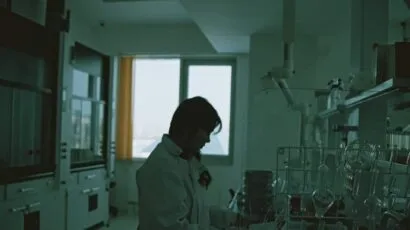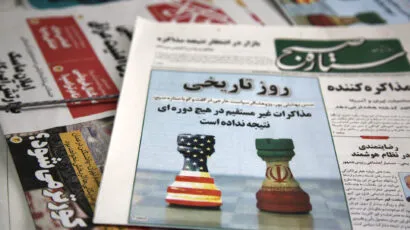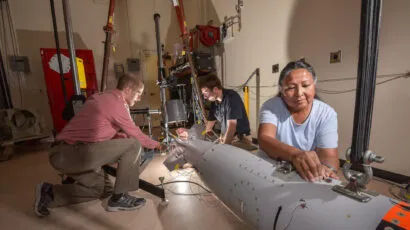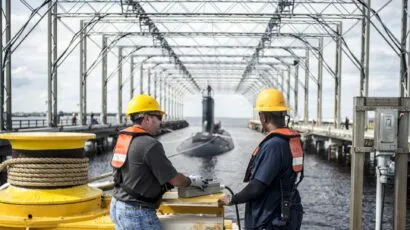The potential dangers in medical isotope production
By Laura H. Kahn | March 16, 2008
The medical isotope metastable technetium 99 emits gamma rays that physicians heavily rely upon to examine how organs such as hearts, lungs, and kidneys function. Technetium 99 is so beneficial to the medical community that it’s used in approximately 80-85 percent of the world’s diagnostic imaging procedures (cardiac perfusion scans and bone scans among them) and 12 million procedures in the United States alone. The size of the global nuclear imaging and therapeutics market is estimated at $3.7 billion per year.
Technetium 99 is derived from molybdenum 99, which is made in nuclear reactors and mostly produced from weapon-grade highly enriched uranium (HEU), or uranium 235 more than 90 percent enriched. Placing HEU “targets” in, or near, nuclear reactor cores produces about 95 percent of the global supply of molybdenum 99. The radioactive cores produce high neutron fluxes that flood the targets and produce molybdenum 99, a short-lived fission product with a half-life of 2.7 days that decays into technetium 99. However, less than 5 percent of these “targets” are consumed; the rest is stockpiled as waste in Canada, Europe, and South Africa, where companies use about 85 kilograms of HEU per year to make molybdenum 99. While the isotope producers provide security for HEU transport and storage, it’s unclear whether the security is stringent enough to eliminate the risk of theft. If a sophisticated terrorist group acquired about 50 kilograms of this waste, they could build a simple Hiroshima-type nuclear bomb
Conversely, low-enriched uranium (LEU) contains less than 20 percent uranium 235 and cannot be used to make a nuclear bomb. But it still can be used to make molybdenum 99. The security cost savings alone would help defray the cost of converting facilities to use LEU. This should prompt a global effort to replace HEU with LEU in medical isotope production.
Europe receives much of its technetium 99 supply from two isotope suppliers–the Institut National des Radioelements in Belgium and Covidien in the Netherlands. They coordinate their efforts so that at least one reactor is always running to ensure a consistent isotope supply for the continent.
North America is primarily dependent on MDS Nordion, a Canadian company, for radioisotopes. Based in Chalk River, Ontario, MDS Nordion supplies its product with a 50-year-old nuclear reactor. The United States ships approximately 20 kilograms of HEU to Canada each year for molybdenum 99 production. (See “Briefing on Proposed Export of High Enriched Uranium to Canada.”)
In an effort to curtail HEU use in hopes of alleviating nuclear security concerns, in 1992, the United States passed the Schumer amendment to the Energy Policy Act. This legislation conditioned U.S. export of HEU to foreign companies with the understanding that these companies would switch to LEU as soon as possible. MDS Nordion agreed to this condition but then–for reasons outlined below–quickly changed its mind.
To replace its aging reactor, MDS Nordion built two new reactors, called Maple 1 and Maple 2, and a facility to process irradiated targets to extract the isotopes, which were supposed to go online in 2000. But the processing facility was designed to accommodate HEU, not LEU, and the reactors were built with design flaws so serious that they might never be activated. (See “New Nuclear Reactor Duds.”) In addition to building defective reactors, MDS Nordion also decided to reverse the Schumer amendment. It hired lobbyists and convinced the medical profession that if the molybdenum 99 producers didn’t continue to receive HEU, the U.S. isotope supply would be in jeopardy. In a March/April 2006 Bulletin article entitled “Bomb-grade Bazaar”, Alan Kuperman wrote about MDS Nordion’s actions in detail.
In the meantime, MDS Nordion’s aging reactor was closed for maintenance in mid-November 2007 and remained closed beyond its scheduled installation of safety-related equipment. The prolonged closure led to medical isotope shortages across the United States and Canada, highlighting the fragility of the North American medical isotope supply
There have been calls within the U.S. nuclear industry for the United States to use one of its own nuclear reactors to produce molybdenum 99. The University of Missouri is exploring doing so, and BWXT Technologies, Inc., a company that supplies nuclear fuel and reactor components for the U.S. Navy and several national government labs, has been looking into building small, liquid-core LEU reactors for this purpose. (See “LEU Fuel Development Progress and Programs, BWXT Technologies, Inc.”) Other countries–notably Australia and Argentina–use LEU targets without adverse effects. A detailed assessment of the feasibility of switching from HEU to LEU is outlined in an article Frank von Hippel and I coauthored entitled, “Feasibility of Eliminating the Use of Highly Enriched Uranium in the Production of Medical Radioisotopes.”
According to Pablo Adelfang of the International Atomic Energy Agency (IAEA), underutilized research reactors around the world are waiting for good business opportunities such as producing medical radioisotopes. Properly managed and operated, these research reactors could sufficiently supply the world’s need for molybdenum 99 and other isotopes. Investment would be needed to improve and build ancillary processing facilities, but the overall cost would be far less than starting anew. The IAEA stands ready to help facilitate negotiations and form coalitions and other international collaborations.
The best way to reduce the risk of nuclear terrorism is to eliminate the materials that could be used to make bombs. From an economic perspective, it makes no sense for the United States to depend upon foreign sources for such an important component of modern medical practice. Likewise, from a security perspective, it makes no sense for the United States to ship HEU abroad only to have its supply of technetium 99 shipped back. Instead, the U.S. government should provide incentives to encourage the development of its own dedicated reactor that uses only LEU to make this important medical radioisotope. Better still, physicians, patients, and hospital purchasers of all nations could help make the world a safer place by making clear that they would prefer that technetium 99 was made only from LEU.
Together, we make the world safer.
The Bulletin elevates expert voices above the noise. But as an independent nonprofit organization, our operations depend on the support of readers like you. Help us continue to deliver quality journalism that holds leaders accountable. Your support of our work at any level is important. In return, we promise our coverage will be understandable, influential, vigilant, solution-oriented, and fair-minded. Together we can make a difference.
Topics: Biosecurity, Columnists















